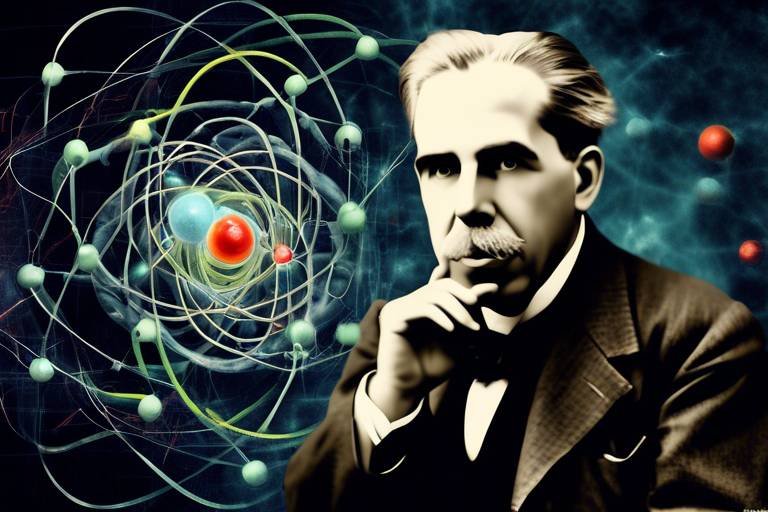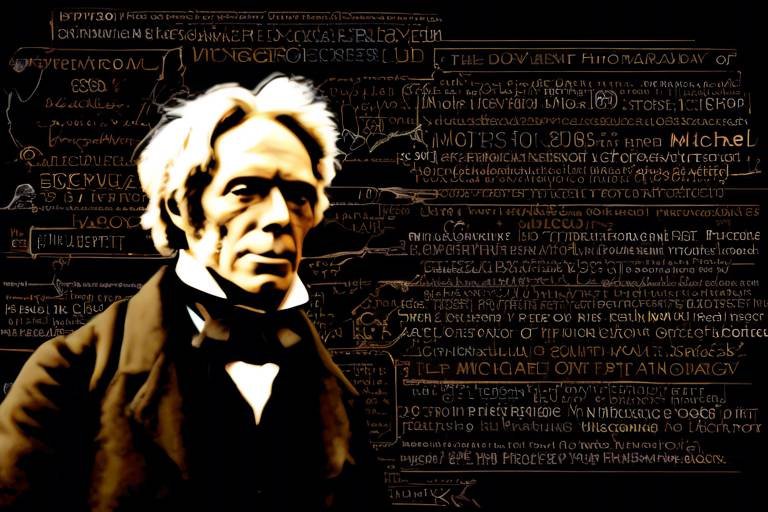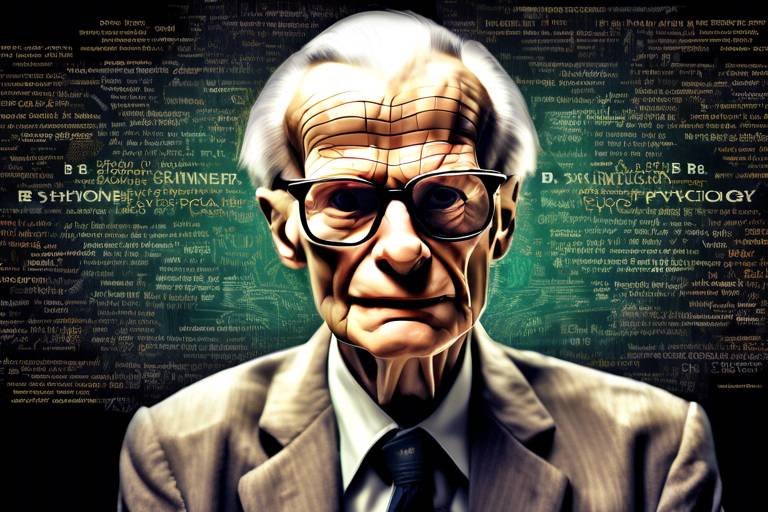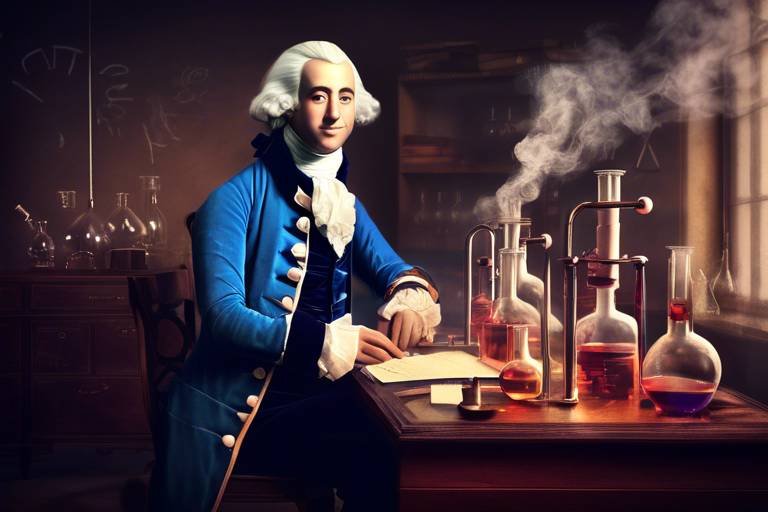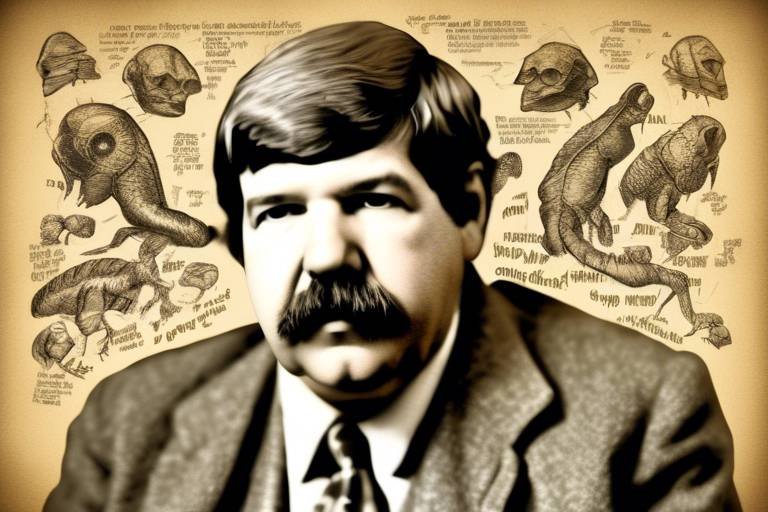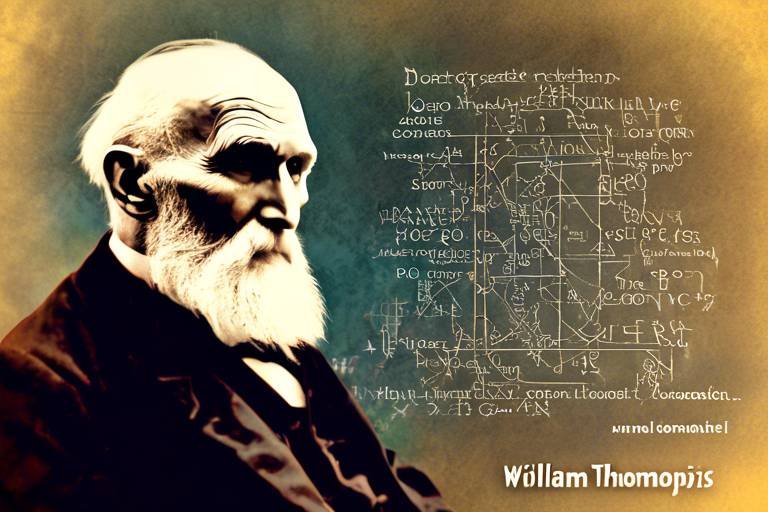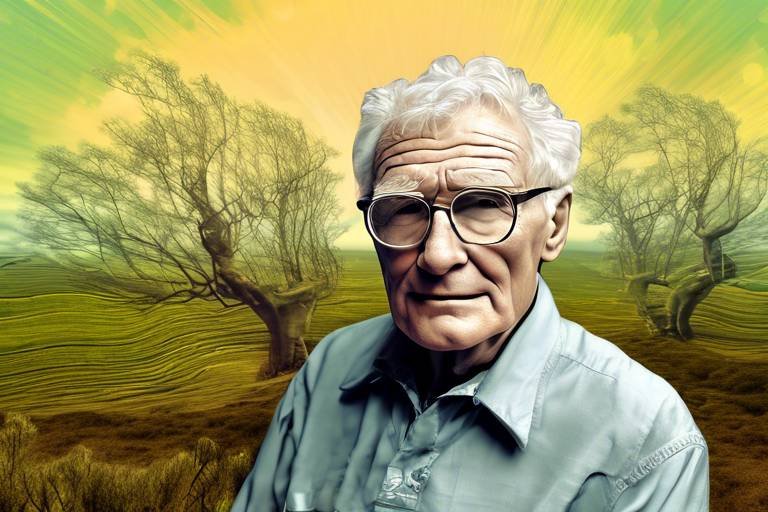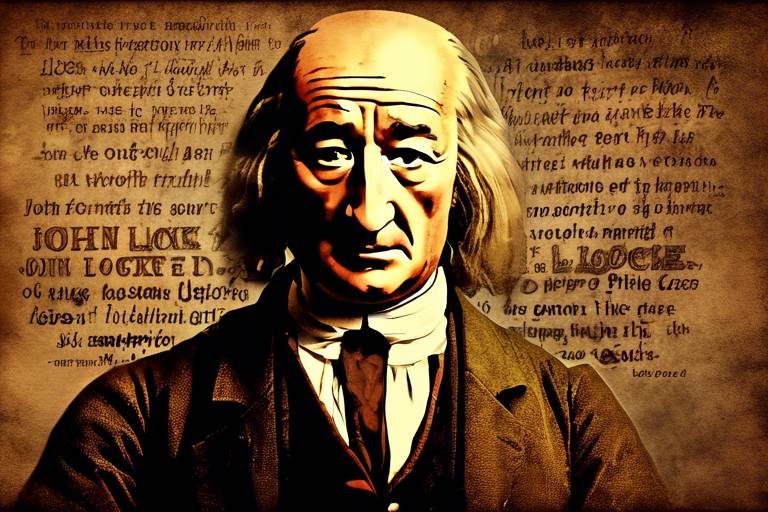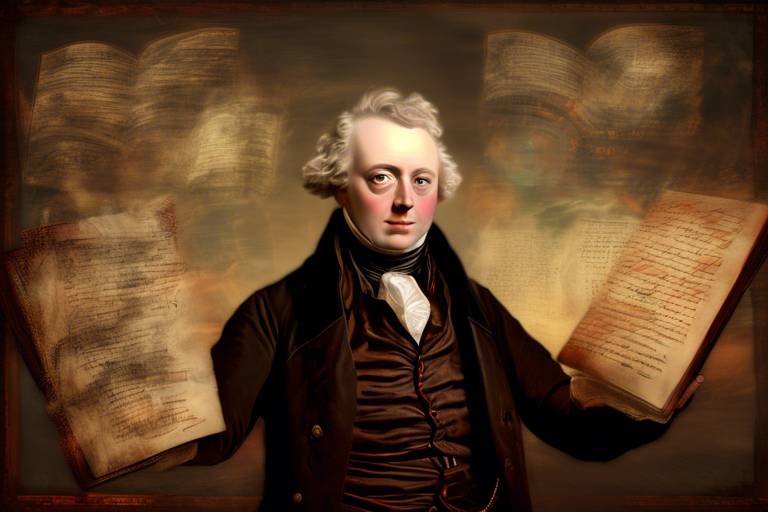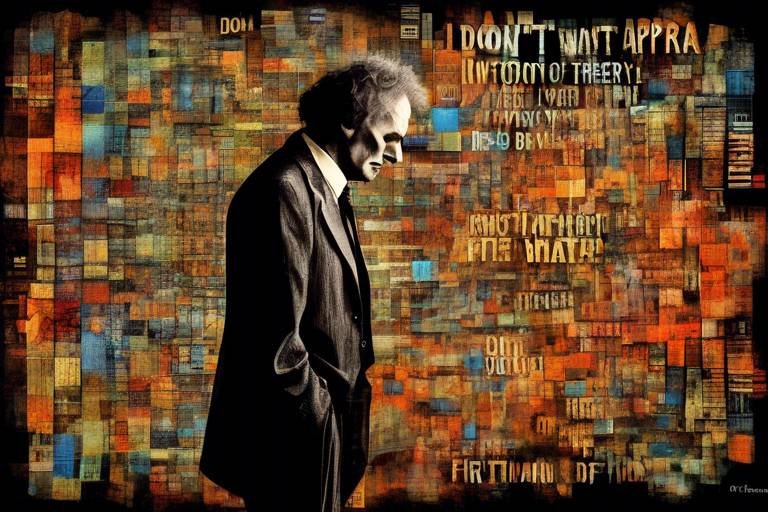The Contributions of Niels Bohr to Atomic Theory
Niels Bohr, a name synonymous with atomic theory, made groundbreaking contributions that reshaped our understanding of the atomic world. His work in the early 20th century not only provided a clearer picture of atomic structure but also laid the foundation for the field of quantum mechanics. Imagine trying to build a complex puzzle without knowing what the final image looks like; that's how scientists were navigating atomic theory before Bohr's insights. His innovative ideas acted as the missing pieces that allowed the scientific community to see the bigger picture.
Bohr's journey began with his revolutionary model of the atom, which he introduced in 1913. This was no ordinary model; it was a quantum leap forward in scientific thought. By proposing that electrons orbit the nucleus at specific distances, or energy levels, Bohr challenged the classical view of atomic structure. Picture the atom as a miniature solar system, where electrons are planets orbiting the sun (the nucleus). This analogy helps us understand how Bohr's model simplified the complexities of atomic behavior while introducing the concept of quantization—an idea that would become central to modern physics.
As we dive deeper into Bohr's contributions, we see that his work was not just about creating a model. He was a key figure in the development of quantum mechanics, a field that would revolutionize science. Bohr's insights helped bridge the gap between classical physics and the emerging quantum theories that were beginning to take shape. He understood that the rules governing the microscopic world were vastly different from those of the macroscopic world we experience daily. This realization was akin to discovering a new language that described the universe's fundamental workings, one that was filled with uncertainty and probabilities.
One of Bohr's most notable ideas is the principle of complementarity. This principle suggests that objects can behave as either particles or waves, depending on how we choose to observe them. It's like watching a magician perform a trick; one moment you see the illusion, and the next, you realize the reality behind it. This duality challenges our classical intuitions and forces us to rethink the very nature of matter and energy. The implications of this principle are profound, as it encourages scientists to adopt a more flexible mindset when interpreting the behavior of subatomic particles.
Furthermore, Bohr's principle of complementarity has been experimentally validated through various phenomena, such as the double-slit experiment. This experiment showcases how light and matter can display characteristics of both waves and particles, depending on the experimental setup. It's a stunning demonstration of the strange yet fascinating world of quantum mechanics, reinforcing the significance of Bohr's contributions in interpreting these behaviors.
Another cornerstone of Bohr's work is the correspondence principle. This principle states that the behavior of quantum systems must align with classical physics when dealing with large quantum numbers. In simpler terms, as we observe larger systems, the strange behaviors of quantum mechanics begin to fade, and classical physics takes over. This idea is crucial for scientists because it provides a bridge between the known and the unknown, allowing for a smoother transition as we explore the quantum realm.
Bohr's contributions have left a lasting impact on modern physics, influencing various fields such as chemistry, materials science, and even the development of quantum computing technologies. His theories are not just historical footnotes; they are the bedrock upon which many contemporary scientific advancements are built. Imagine trying to navigate through a dense forest without a map; that's what it would be like without Bohr's foundational work guiding us through the complexities of atomic theory.
In education, Bohr's theories continue to be a fundamental part of physics curricula worldwide. For generations, students have learned about atomic structure and quantum phenomena through the lens of Bohr's insights. His legacy lives on, shaping the minds of future scientists who will continue to explore the mysteries of the universe.
As a testament to his remarkable contributions, Niels Bohr received numerous accolades, including the Nobel Prize in Physics in 1922. This recognition highlights not only his genius but also the profound impact of his work on the scientific community and atomic theory as a whole. Bohr's journey from a curious young scientist to a Nobel laureate serves as an inspiration for aspiring physicists everywhere.
- What is Niels Bohr known for? Bohr is best known for his model of the atom, which introduced quantized energy levels and laid the groundwork for quantum mechanics.
- What is the principle of complementarity? This principle states that objects can exhibit particle-like or wave-like behavior depending on the experimental context.
- How did Bohr's work influence modern physics? Bohr's contributions have shaped various fields, including chemistry and materials science, and have been pivotal in the development of quantum computing technologies.
- What awards did Niels Bohr receive? Bohr received numerous accolades, including the Nobel Prize in Physics in 1922, recognizing his significant contributions to atomic theory.

Bohr's Atomic Model
Niels Bohr introduced a revolutionary model of the atom in 1913, which fundamentally transformed our understanding of atomic structure and behavior. Prior to Bohr, the prevailing model was the **Rutherford model**, which depicted the atom as a mini solar system with electrons orbiting a dense nucleus. However, Bohr took this concept a step further by incorporating the idea of **quantized energy levels**. This meant that electrons could only exist in specific energy states, much like a ladder where you can only stand on certain rungs. This was a **game-changer** in the world of physics.
Bohr's model proposed that electrons orbit the nucleus at fixed distances, and these orbits correspond to specific energy levels. When an electron jumps from one orbit to another, it either absorbs or emits energy in the form of a photon. This concept of quantization not only explained the stability of atoms but also accounted for the emission spectra observed in elements. For instance, when you heat a gas, it emits light at specific wavelengths, creating a unique fingerprint for each element. Bohr's model provided a framework to understand this phenomenon, which was previously a mystery.
To illustrate the key aspects of Bohr's atomic model, let's break down its main components:
| Component | Description |
|---|---|
| Electron Orbits | Electrons move in circular orbits around the nucleus at fixed distances. |
| Quantized Energy Levels | Electrons can only occupy certain energy levels, similar to steps on a ladder. |
| Energy Absorption/Emission | Electrons absorb or emit energy when transitioning between orbits. |
This model not only explained the stability of atoms but also laid the groundwork for future developments in atomic theory. Bohr's atomic model was a significant leap forward, but it was not without its limitations. For example, while it worked well for hydrogen, it struggled to accurately predict the behavior of more complex atoms. Nevertheless, it opened the door to the field of quantum mechanics, leading to further exploration and refinement in our understanding of atomic structure.
In summary, Bohr's atomic model was a **pivotal** moment in the history of science. It challenged existing notions and provided a coherent explanation of atomic behavior, setting the stage for the modern understanding of chemistry and physics. The implications of his work extend far beyond the classroom, impacting various fields such as materials science, chemistry, and even technology development today.

Quantum Mechanics and Bohr
Niels Bohr was not just a scientist; he was a pioneer who reshaped the landscape of quantum mechanics. In the early 20th century, as the scientific community grappled with the mysteries of the atomic world, Bohr stepped in with groundbreaking ideas that bridged the gap between classical physics and the new, uncharted territory of quantum theory. His contributions were not merely theoretical; they provided a framework that helped others make sense of the bizarre behaviors observed at the atomic level.
One of Bohr's most significant contributions to quantum mechanics was his introduction of quantized energy levels within atoms. Imagine the atom as a solar system, where electrons orbit the nucleus like planets around the sun. However, unlike planets, these electrons can only occupy specific orbits, or energy levels, and they cannot exist in between these levels. This idea was revolutionary because it challenged the classical notion that energy could vary continuously. Instead, Bohr proposed that an electron could only gain or lose energy in discrete amounts, which he called quanta. This concept not only provided clarity but also led to the development of quantum mechanics as we know it today.
Furthermore, Bohr's work on the hydrogen atom was particularly notable. By applying his model, he was able to explain the spectral lines observed in hydrogen's emission spectrum. This was a significant breakthrough, as it demonstrated that the energy transitions of electrons between quantized levels produced specific wavelengths of light. The simplicity of his model contrasted sharply with the complexity of the phenomena it described, making it a powerful tool for understanding atomic behavior.
As Bohr delved deeper into quantum mechanics, he encountered the perplexing concept of wave-particle duality. This idea suggests that particles, such as electrons, can exhibit properties of both particles and waves. Bohr's insights into this duality were instrumental in shaping the way scientists approached quantum mechanics. He argued that the behavior of quantum objects could not be fully understood through classical physics alone; instead, one must consider the context of the experiment to grasp the nature of these particles.
To further elaborate on Bohr's contributions, let's take a look at some key concepts he introduced:
| Concept | Description |
|---|---|
| Quantized Energy Levels | Electrons can only occupy specific energy levels within an atom. |
| Wave-Particle Duality | Particles exhibit both wave-like and particle-like properties depending on the experimental setup. |
| Complementarity Principle | Objects can show different properties based on the context of the experiment. |
| Correspondence Principle | Quantum mechanics must align with classical physics at large quantum numbers. |
In summary, Niels Bohr's impact on quantum mechanics cannot be overstated. His innovative ideas not only advanced our understanding of atomic structure but also laid the foundation for future research in the field. As we continue to explore the quantum realm, Bohr's legacy remains a guiding light, illuminating the path for scientists and enthusiasts alike.
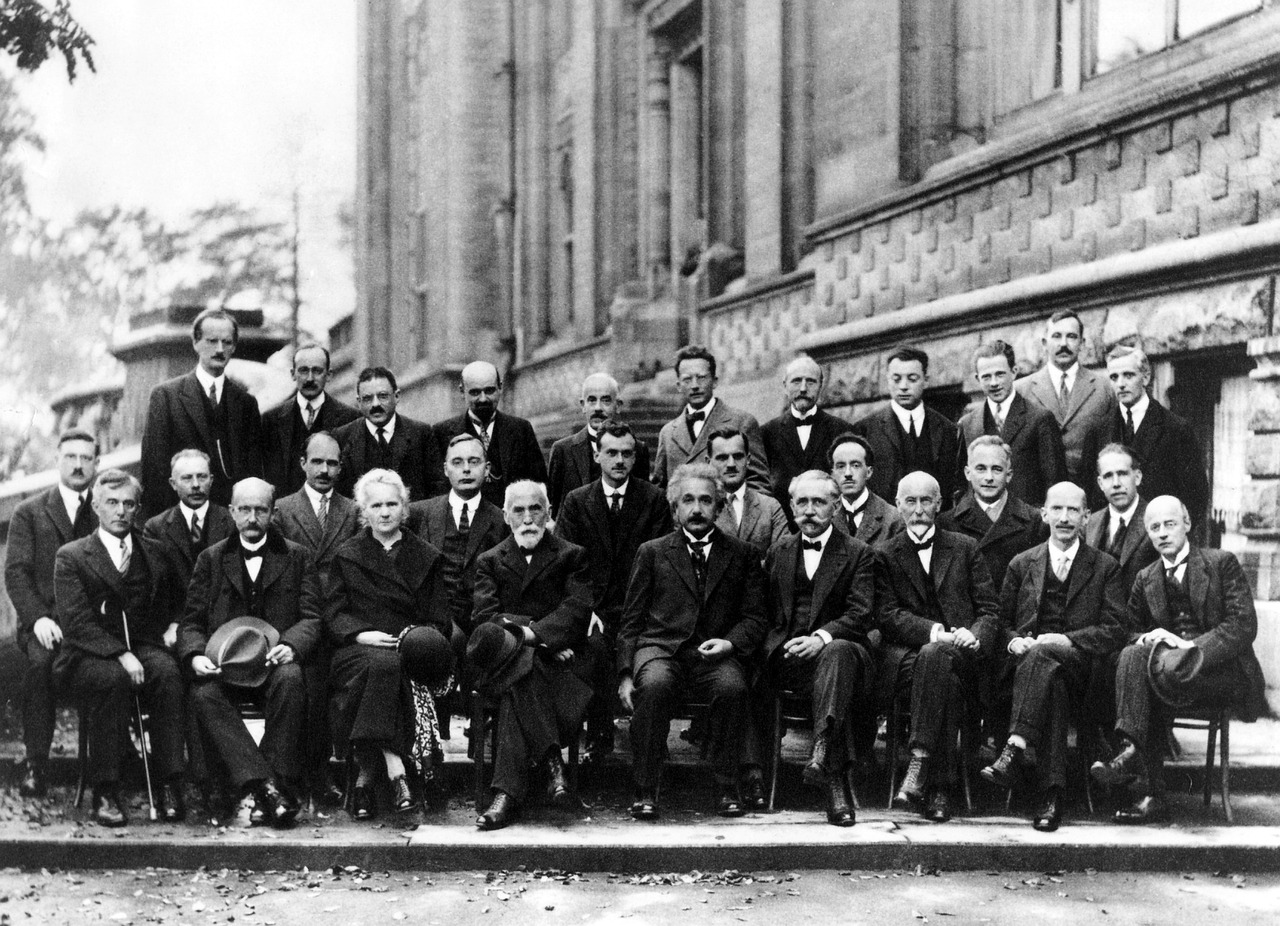
The Principle of Complementarity
Niels Bohr's principle of complementarity is a cornerstone of quantum mechanics that fundamentally reshaped our understanding of atomic and subatomic behavior. At its core, this principle suggests that objects can display both particle-like and wave-like characteristics, but not simultaneously. It’s like trying to see both the front and back of a coin at the same time; you can only focus on one side at a time, depending on how you look at it. This idea was revolutionary because it challenged the classical physics view that particles and waves were distinct entities.
Imagine a scenario where you’re watching a game of basketball. When the ball is in motion, it behaves like a wave, spreading out as it travels through the air. But when it lands in the hands of a player, it becomes a solid object, exhibiting particle-like properties. This duality is not just a quirky observation; it has profound implications for how we understand the universe. Bohr's principle of complementarity emphasizes that the way we observe a phenomenon can drastically alter our interpretation of it. This notion leads us to ask: are we merely observers, or do we play an active role in shaping reality?
To further illustrate the significance of this principle, consider the famous double-slit experiment. When light passes through two slits, it creates an interference pattern typical of waves. However, if we attempt to measure which slit the light goes through, it behaves like a particle, and the interference pattern disappears. This experiment encapsulates the essence of complementarity: the behavior of light (and matter) is contingent upon the experimental setup. In essence, Bohr’s principle teaches us that our understanding of the world is not just a matter of objective measurement but is intertwined with the context of our observations.
Bohr’s insights into complementarity have not only influenced physics but have also seeped into other fields, prompting philosophical discussions about the nature of reality itself. The implications stretch across various domains, from quantum computing to the interpretation of quantum mechanics. As we continue to explore the universe at the quantum level, Bohr’s principle serves as a reminder that our perceptions and the tools we use to measure phenomena can shape our understanding of the very fabric of reality.

Implications for Wave-Particle Duality
The implications of Bohr's principle of complementarity are nothing short of revolutionary, particularly when it comes to the concept of wave-particle duality. This idea suggests that particles, such as electrons and photons, can exhibit both wave-like and particle-like properties depending on how they are observed. Imagine trying to catch a glimpse of a chameleon that changes color based on your perspective; that's what wave-particle duality is like! It's a fundamental shift in our understanding of the universe, challenging the classical views that neatly categorized particles and waves into separate entities.
Before Bohr's insights, scientists were often stuck in a binary mindset, thinking of light as just a wave and matter as just particles. However, Bohr's work opened the door to a more nuanced understanding of these phenomena. For instance, when light is passed through a prism, it disperses into a spectrum of colors, behaving like a wave. Yet, when we observe light interacting with matter, it can behave like a stream of particles, or photons, hitting a surface one at a time. This duality is not just a theoretical concept; it has practical implications in various fields, including quantum computing, quantum cryptography, and even semiconductor technology.
To illustrate this concept further, consider the famous double-slit experiment. When particles are fired at a barrier with two slits, they create an interference pattern on the other side, indicative of wave behavior. However, if we attempt to measure which slit the particle goes through, it behaves like a particle, and the interference pattern disappears. This experiment highlights the profound connection between observation and the behavior of quantum entities, emphasizing that the act of measurement itself influences outcomes. It's as if the universe is saying, "You see what you want to see!"
The implications of wave-particle duality extend beyond mere curiosity; they challenge our very understanding of reality. They force us to reconsider the nature of existence and observation. In a sense, Bohr's work compels us to acknowledge that the universe operates under rules that defy our everyday experiences. It invites us to embrace a world where certainty is elusive and where the act of observation plays a crucial role in shaping reality.
In summary, the implications of wave-particle duality, as illuminated by Bohr's principle of complementarity, are profound and far-reaching. They not only reshape our understanding of atomic and subatomic behavior but also lay the groundwork for innovations that continue to transform technology and science today. As we delve deeper into the quantum realm, we find ourselves not just observers, but active participants in the unfolding drama of existence.
- What is wave-particle duality?
Wave-particle duality is the concept that every particle or quantum entity exhibits both wave-like and particle-like properties, depending on the experimental context.
- How did Niels Bohr contribute to this concept?
Niels Bohr introduced the principle of complementarity, which states that objects can show wave or particle behavior based on how they are observed.
- What is the double-slit experiment?
The double-slit experiment demonstrates wave-particle duality by showing that particles can create interference patterns like waves, but only when not observed.
- Why is wave-particle duality important?
Wave-particle duality is crucial for understanding quantum mechanics and has applications in various advanced technologies, including quantum computing.
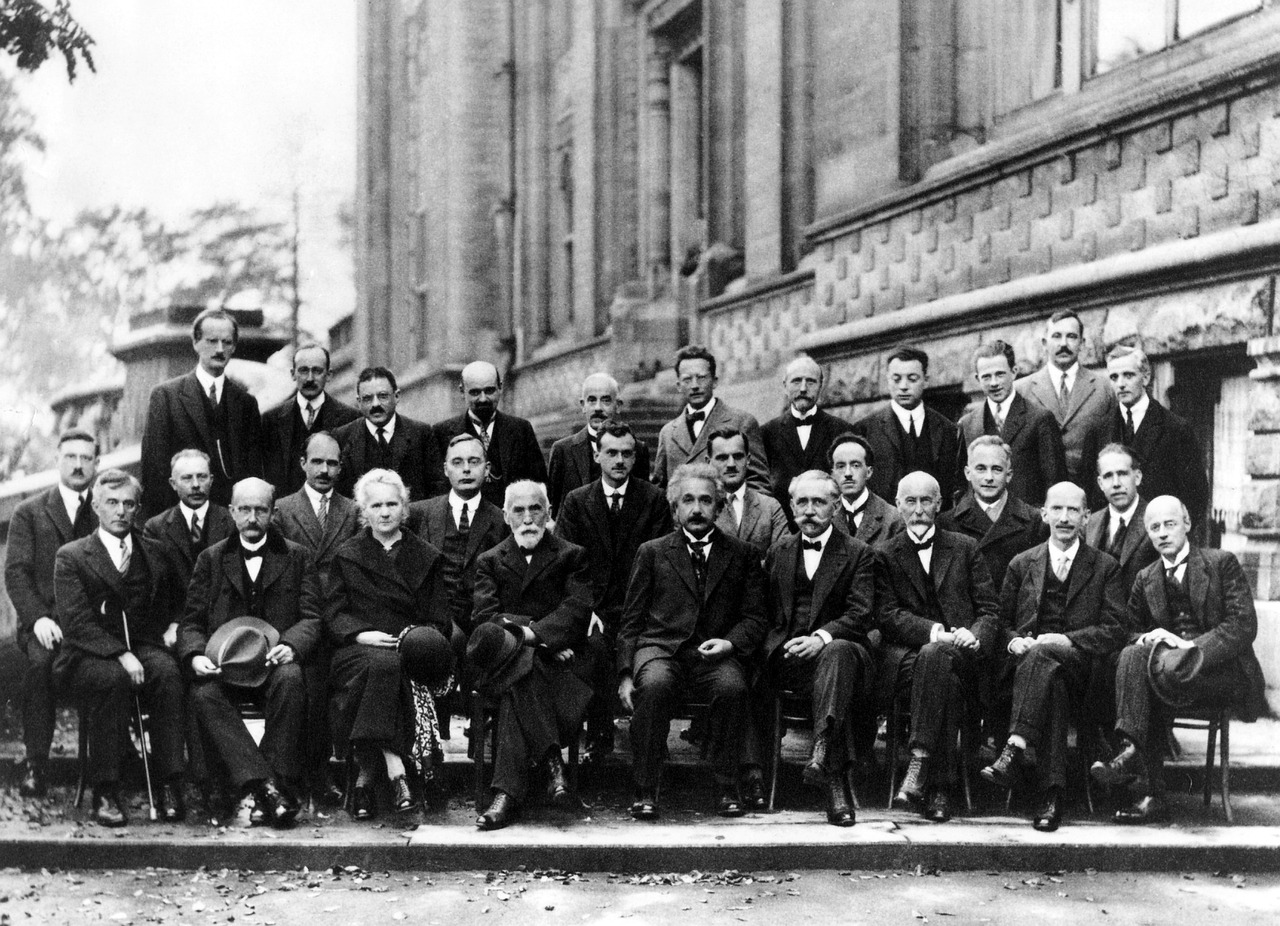
Experimental Validation
Niels Bohr's principle of complementarity, which suggests that particles can exhibit both wave-like and particle-like properties, has been validated through a variety of experimental observations. These experiments have not only reinforced Bohr's theories but also provided a clearer understanding of quantum mechanics and the behavior of subatomic particles. For instance, the famous double-slit experiment is a classic demonstration of wave-particle duality. In this experiment, when light or electrons pass through two closely spaced slits, they create an interference pattern on a screen, indicating wave behavior. However, when observed, these same particles appear to behave like individual particles, thereby confirming Bohr's assertion that the behavior of these entities depends on the experimental context.
Moreover, experiments involving quantum entanglement have further validated Bohr's principles. When two particles become entangled, the state of one instantly influences the state of the other, regardless of the distance separating them. This phenomenon perplexes classical intuitions and aligns perfectly with Bohr's ideas about the interconnectedness of quantum systems. The implications of these experimental validations are profound, as they challenge our conventional understanding of reality and force us to reconsider the nature of observation in quantum mechanics.
To summarize some key experiments that have validated Bohr's principles:
- Double-Slit Experiment: Demonstrates wave-particle duality.
- Photoelectric Effect: Showcases particle behavior of light.
- Quantum Entanglement: Validates the principle of complementarity.
These experiments not only support Bohr’s theoretical framework but also inspire ongoing research in quantum mechanics, leading to new technologies and applications. As scientists continue to explore the quantum realm, the foundational work of Niels Bohr remains a guiding light, illuminating the path toward greater understanding and innovation in physics.
- What is Niels Bohr known for?
Niels Bohr is primarily known for his groundbreaking contributions to atomic theory and quantum mechanics, particularly his model of the atom and the principle of complementarity.
- What is the principle of complementarity?
The principle of complementarity states that objects can exhibit particle-like or wave-like behavior depending on how they are observed or measured.
- How did Bohr's work influence modern physics?
Bohr's contributions laid the groundwork for advancements in various fields such as chemistry, materials science, and quantum computing technologies.

Bohr's Correspondence Principle
Niels Bohr's correspondence principle is a fascinating concept that bridges the gap between the worlds of quantum mechanics and classical physics. Imagine standing on a bridge, where one side represents the tangible, predictable realm of classical physics and the other side embodies the strange, often counterintuitive realm of quantum mechanics. Bohr's principle serves as that bridge, ensuring that as we transition from the quantum world to the classical world, the rules we observe in the quantum realm gradually align with those we are familiar with in classical physics.
At its core, the correspondence principle asserts that the behavior of quantum systems must converge with classical physics when dealing with systems that have large quantum numbers. This means that, as a quantum system becomes larger and more complex, its behavior should start to resemble classical predictions. Think of it like watching a small child playing with a toy car: when the child is close, you see the intricate details of the toy. However, as the child moves further away, the toy car begins to look more like a simple dot on the horizon. In the same way, quantum systems behave distinctly at small scales but start to mirror classical behavior as they grow.
One of the most compelling aspects of this principle is its ability to provide a framework for understanding phenomena that might otherwise seem baffling. For example, consider the behavior of electrons in an atom. At lower energy levels, their behavior can be described using quantum mechanics, but as the energy levels increase, the electrons' behavior can be predicted using classical physics. This duality is essential for scientists as they navigate between these two realms, providing a consistent approach to understanding atomic and subatomic behavior.
To illustrate this, let's take a look at a simple comparison of quantum and classical systems:
| Aspect | Quantum Systems | Classical Systems |
|---|---|---|
| Scale | Small (atomic/subatomic) | Large (macroscopic) |
| Behavior | Probabilistic | Deterministic |
| Energy Levels | Quantized | Continuous |
| Examples | Electrons, photons | Planets, cars |
This table highlights the differences between quantum and classical systems, illustrating how Bohr's correspondence principle helps to navigate these differences. It reassures physicists that the laws of nature remain consistent, even as they shift from one domain to another. This principle has not only enhanced our understanding of atomic behavior but has also paved the way for various technological advancements, including the development of quantum computing and advanced materials.
In summary, Bohr's correspondence principle is a testament to the elegance of physics, demonstrating how two seemingly disparate worlds can coexist and complement each other. It reminds us that while the universe may be governed by complex laws, there is a remarkable order that underlies it all, waiting to be discovered and understood.
- What is the correspondence principle? The correspondence principle states that the behavior of quantum systems must align with classical physics in the limit of large quantum numbers.
- How does the correspondence principle apply to atomic behavior? As quantum systems like electrons in an atom gain energy and move to higher energy levels, their behavior starts to resemble predictions made by classical physics.
- Why is the correspondence principle important? It provides a framework for understanding the transition between quantum and classical physics, ensuring consistency in the laws of nature across different scales.

Impact on Modern Physics
Niels Bohr's contributions to atomic theory have had a profound and lasting impact on the field of modern physics. His innovative ideas not only reshaped our understanding of atomic structure but also paved the way for numerous advancements across various scientific disciplines. Imagine a world where the mysteries of the atom were still unsolved; Bohr's work was like a beacon, illuminating the path for future physicists and researchers.
One of the most significant impacts of Bohr's work is seen in the field of chemistry. The understanding of atomic structure has allowed chemists to delve deeper into the interactions between different elements. By recognizing that electrons exist in quantized energy levels, chemists can predict how atoms will bond and react with one another. This has been crucial in developing everything from new materials to pharmaceuticals.
Moreover, Bohr's principles have influenced the burgeoning field of materials science. Researchers utilize his theories to explore the properties of materials at the atomic level, leading to innovations in nanotechnology and the development of new materials with unique characteristics. For instance, the creation of superconductors and semiconductors has roots in the quantum mechanical principles that Bohr helped establish.
Bohr's work also laid the groundwork for the development of quantum computing technologies. As we venture into an era dominated by information technology, the principles of quantum mechanics are becoming increasingly relevant. Quantum computers, which leverage the bizarre behaviors of particles, are set to revolutionize computing power, and Bohr's insights into atomic behavior are fundamental to this field.
In addition to these advancements, Bohr's theories continue to shape the curriculum in physics education. His model of the atom and his contributions to quantum mechanics are essential components of physics courses worldwide. Students learn not only about the structure of the atom but also about the implications of quantum theory in understanding the universe. This educational legacy ensures that future generations of scientists are well-equipped to tackle the challenges of modern physics.
To summarize, the impact of Niels Bohr on modern physics is multi-faceted and far-reaching. His revolutionary ideas have influenced various fields, including chemistry, materials science, and computing, while also becoming integral to educational frameworks. The legacy of his work continues to inspire and guide researchers and students alike, ensuring that the quest for knowledge in the realm of atomic and quantum physics remains vibrant.
- What is Niels Bohr best known for?
Niels Bohr is best known for his model of the atom and his foundational contributions to quantum mechanics. - How did Bohr's work influence modern technology?
Bohr's principles are crucial for advancements in fields like quantum computing and materials science. - What is the principle of complementarity?
This principle states that objects can exhibit both particle-like and wave-like behavior depending on the experimental context. - Why is Bohr's atomic model important?
It introduced quantized energy levels, fundamentally changing our understanding of atomic structure and behavior.

Legacy in Education
Niels Bohr's contributions to atomic theory have left an indelible mark on the field of education, particularly in the realms of physics and chemistry. His theories serve as a cornerstone for understanding the fundamental principles of atomic structure and quantum mechanics. In classrooms around the world, students engage with Bohr's model of the atom, which introduces them to concepts such as quantized energy levels and electron configurations. This model not only simplifies the complexities of atomic behavior but also ignites curiosity about the underlying principles of the universe.
Moreover, Bohr's legacy is not confined to textbooks alone. His work has inspired countless educators to adopt innovative teaching methods that emphasize inquiry-based learning. By encouraging students to explore and question the nature of light and matter, educators foster a deeper understanding of scientific concepts. For instance, experiments demonstrating wave-particle duality, a concept that Bohr significantly contributed to, are often included in laboratory curricula, allowing students to witness firsthand the phenomena that underpin modern physics.
In addition to his direct influence on physics education, Bohr's principles are integrated into various interdisciplinary studies. For example, his ideas have paved the way for advancements in fields such as materials science and quantum computing, which are increasingly becoming part of educational programs. Students today are not only learning about atomic theory but are also applying these principles to cutting-edge technologies, making Bohr's work relevant to contemporary scientific challenges.
The impact of Bohr's legacy in education can also be seen in the way that educators approach complex topics. By using analogies and metaphors inspired by Bohr's theories, teachers can make challenging concepts more relatable. For instance, comparing the quantized energy levels of electrons to the rungs of a ladder helps students visualize how electrons occupy specific energy states. This method of teaching not only enhances comprehension but also makes learning more engaging.
Overall, Niels Bohr's legacy in education is profound and far-reaching. His contributions continue to shape the curriculum and inspire future generations of scientists. As students delve into the mysteries of the atomic world, they carry forward the torch lit by Bohr, exploring new frontiers in physics and beyond.
- What is Niels Bohr known for?
Bohr is renowned for his model of the atom and significant contributions to quantum mechanics, particularly the concepts of quantized energy levels and wave-particle duality. - How did Bohr's work influence modern physics?
His theories laid the groundwork for advancements in various fields, including chemistry and materials science, and have been fundamental in the development of quantum computing. - What is the principle of complementarity?
This principle posits that objects can exhibit both particle-like and wave-like behavior depending on the experimental context, which is crucial for understanding quantum mechanics. - Why is Bohr's atomic model important?
Bohr's model revolutionized the understanding of atomic structure and behavior, providing a framework that is still taught in physics education today.

Recognition and Awards
Niels Bohr's contributions to atomic theory and quantum mechanics have been recognized globally, solidifying his place as one of the most influential physicists of the 20th century. His groundbreaking work not only transformed our understanding of the atomic structure but also opened new avenues in the realm of physics, making him a pivotal figure in the scientific community. Among the many accolades he received, the most notable is the Nobel Prize in Physics, awarded to him in 1922 for his investigations of the structure of atoms and the radiation emanating from them.
Bohr's Nobel Prize was a significant milestone, marking the recognition of his innovative ideas and their implications for the field of physics. This prestigious award was not just a personal achievement but also a testament to the importance of his work in shaping modern science. His Nobel lecture, which detailed his atomic model and the principles of quantum mechanics, is still referenced today and serves as a foundational piece of scientific literature.
In addition to the Nobel Prize, Bohr received numerous other honors throughout his life, reflecting his profound impact on science. Some of these accolades include:
- The Copley Medal from the Royal Society in 1923
- Membership in various scientific academies around the world, including the Royal Danish Academy of Sciences
- The Franklin Medal in 1938
- The Enrico Fermi Award in 1958
Furthermore, Bohr's legacy extends beyond awards and recognition. He was instrumental in establishing the Institute for Theoretical Physics in Copenhagen, which became a hub for physicists from around the world. His commitment to fostering collaboration and innovation in the scientific community has left an indelible mark on the field.
Even today, Bohr's work continues to inspire new generations of scientists. Many educational institutions honor his contributions by naming awards, lectures, and even buildings after him. His ability to blend theoretical insights with experimental validation has set a standard that many strive to achieve in the scientific community.
In summary, Niels Bohr's recognition and awards are not merely a reflection of his individual accomplishments but also signify the profound influence his work has had on the entire field of physics. His legacy is one of innovation, collaboration, and a relentless pursuit of understanding the mysteries of the atomic world.
- What was Niels Bohr's most significant contribution to atomic theory?
Bohr's most significant contribution was his model of the atom, which introduced quantized energy levels, fundamentally changing our understanding of atomic structure. - Did Niels Bohr win any awards?
Yes, he won several prestigious awards, including the Nobel Prize in Physics in 1922. - What is the principle of complementarity?
This principle states that objects can exhibit particle-like or wave-like behavior depending on the experimental context, a key concept in quantum mechanics.
Frequently Asked Questions
- What is Niels Bohr's atomic model?
Niels Bohr's atomic model, introduced in 1913, revolutionized our understanding of atomic structure. It proposed that electrons orbit the nucleus in specific, quantized energy levels, rather than in random paths. This model explained how atoms emit and absorb energy, laying the groundwork for modern atomic theory.
- How did Bohr contribute to quantum mechanics?
Bohr was instrumental in the development of quantum mechanics by offering insights that connected classical physics with emerging quantum theories. His work helped to clarify the behavior of particles at the atomic level, showcasing how quantum principles could explain phenomena that classical physics could not.
- What is the principle of complementarity?
The principle of complementarity, a cornerstone of Bohr's philosophy, states that objects can demonstrate either particle-like or wave-like behavior, depending on the experimental setup. This concept challenges traditional views and is essential for understanding wave-particle duality in quantum mechanics.
- What are the implications of wave-particle duality?
Wave-particle duality suggests that particles, like electrons, can behave both as particles and waves. This duality is fundamental to quantum mechanics, prompting a re-evaluation of our understanding of matter and energy, and has led to numerous technological advancements, including quantum computing.
- What is Bohr's correspondence principle?
Bohr's correspondence principle asserts that the behavior of quantum systems must converge with classical physics as quantum numbers become large. This principle bridges the gap between classical and quantum physics, ensuring that quantum mechanics aligns with established laws of physics at macroscopic scales.
- How has Bohr's work impacted modern physics?
Bohr's contributions have profoundly influenced various fields, including chemistry, materials science, and quantum computing. His theories provide a foundational understanding of atomic structure and quantum phenomena, shaping scientific research and education for generations.
- What is Bohr's legacy in education?
Niels Bohr's theories remain integral to physics education, forming the basis of curricula focused on atomic structure and quantum mechanics. His legacy continues to inspire students and educators alike, ensuring that his groundbreaking ideas endure in scientific discourse.
- What awards did Niels Bohr receive?
Niels Bohr received numerous accolades throughout his career, most notably the Nobel Prize in Physics in 1922. This recognition underscores his significant impact on science and his enduring legacy in the field of atomic theory.

